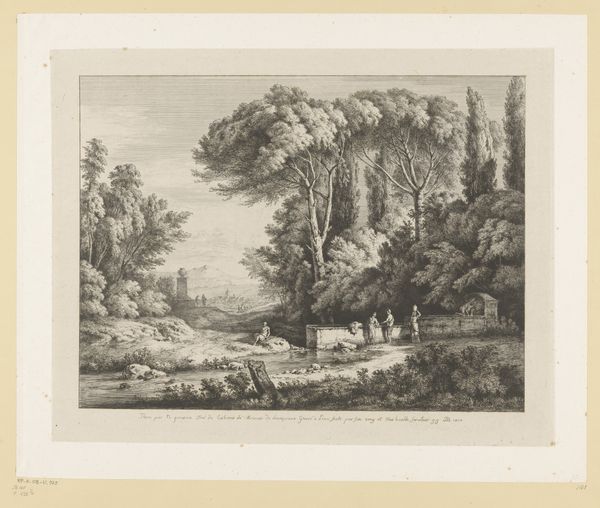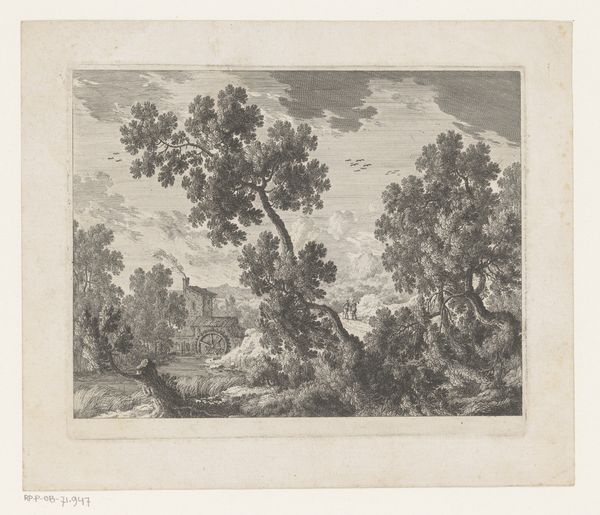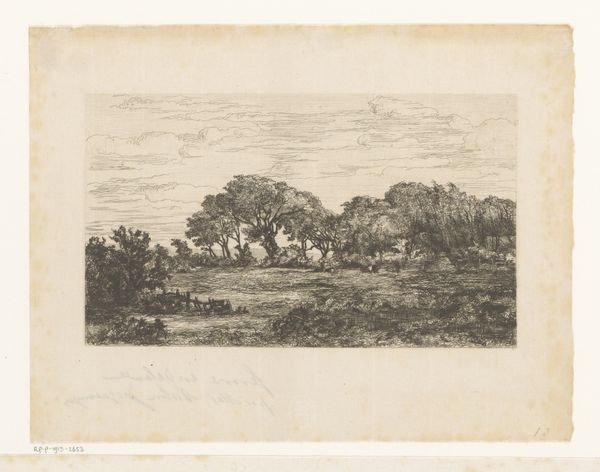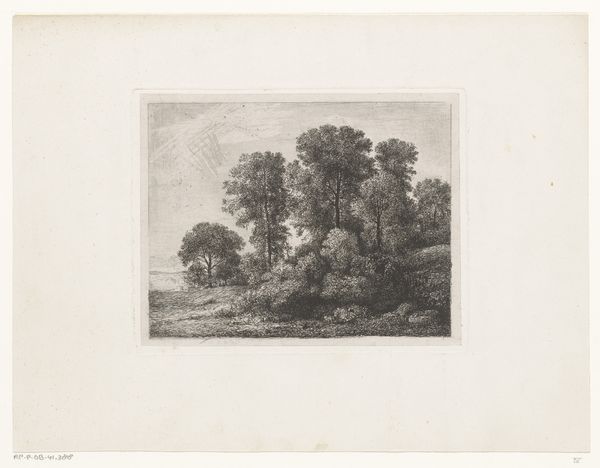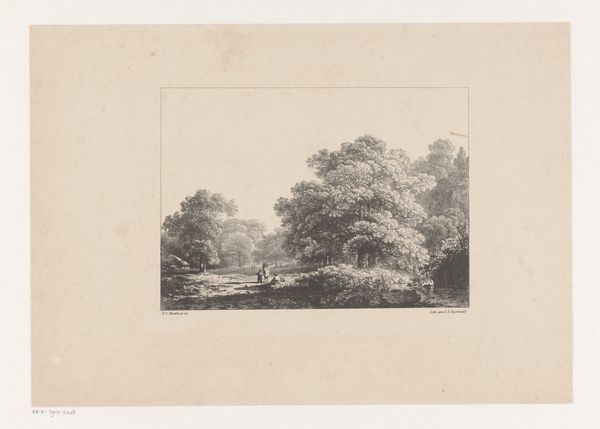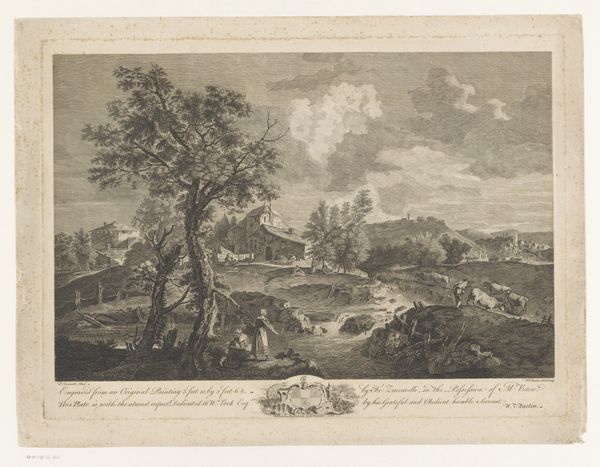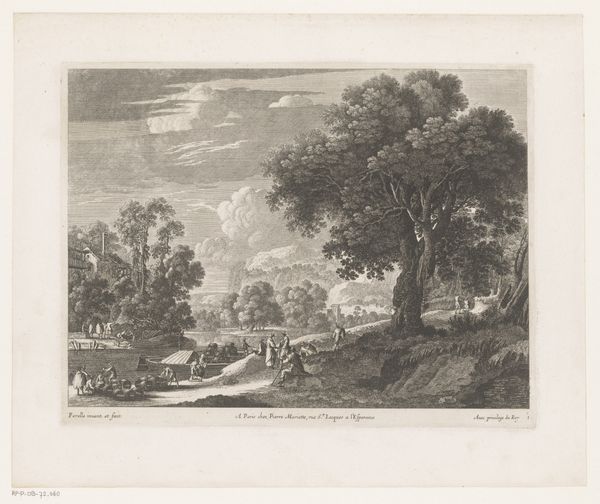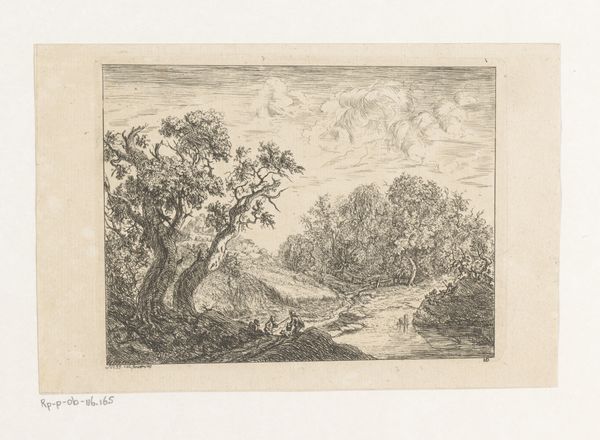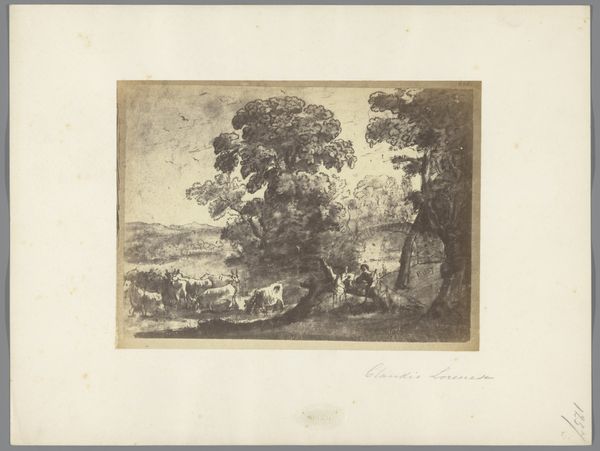
drawing, print, etching, paper
#
drawing
# print
#
etching
#
landscape
#
figuration
#
paper
#
romanticism
#
line
Dimensions: 430 × 480 mm (plate); 525 × 699 mm (sheet)
Copyright: Public Domain
Curator: This is Eugène Blery's "The Old Oak by the Pools at Bellecroix," an etching from 1843, now residing here at The Art Institute of Chicago. It’s a wonderful example of landscape work from that period. Editor: The overwhelming feeling I get is a sort of wistful calm. The contrast between the detailed tree and the softer rendering of the sky contributes to this feeling. Curator: Etchings like these served a vital role in disseminating imagery beyond elite circles. Blery wasn’t just depicting a picturesque scene, but making it accessible to a broader public hungry for romantic depictions of nature. Editor: Indeed, trees held a symbolic potency in Romanticism, didn't they? Especially oak trees. The imposing oak on the left suggests endurance and stability, almost mirroring the permanence of nature in contrast to fleeting human existence. Curator: Precisely! And consider the choice of etching as a medium. The meticulous labor intensifies the sense of a slow, thoughtful engagement with the subject matter. It’s not just a quick sketch; it's a crafted, considered statement. The line work captures detail. Editor: I notice the human elements are downplayed—a few small figures and livestock barely distinguishable on the bank, yielding dominance to the natural elements. It is like mankind is small compared to the natural world around it. Curator: The presence of those figures serves to reinforce the scale and grandeur of the landscape itself. Also, this part of France had a history and it was of the public, Blery is evoking feelings of longing for rural pastimes. Editor: Looking at this image now, in our modern age, one can appreciate the visual archive that Blery provided to viewers who can learn something about nineteenth century sensibilities through visual forms. Curator: Absolutely. Blery's rendering reminds us how art shapes our perceptions of the natural world and encourages conversations around its historical and social context. Editor: It is almost like this visual language connects the past and the present, and allows viewers like myself to look for something old and timeless in the work of Blery.
Comments
No comments
Be the first to comment and join the conversation on the ultimate creative platform.

